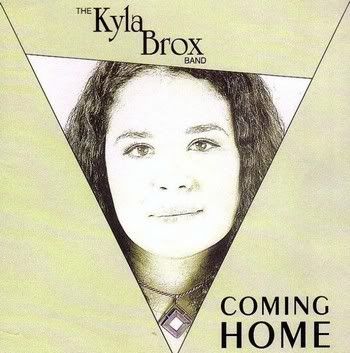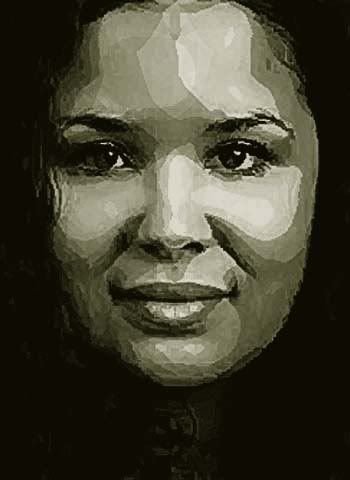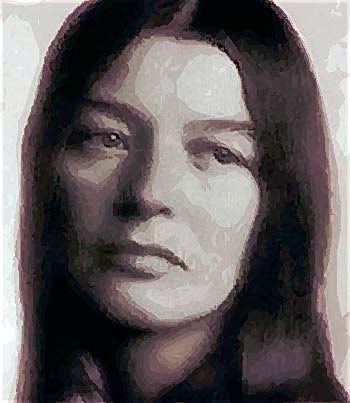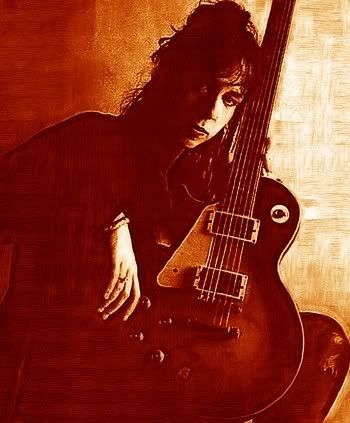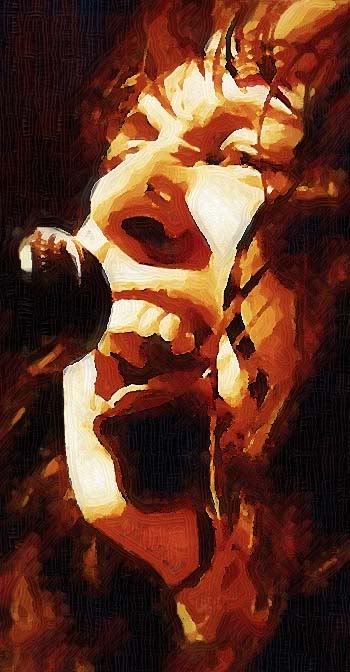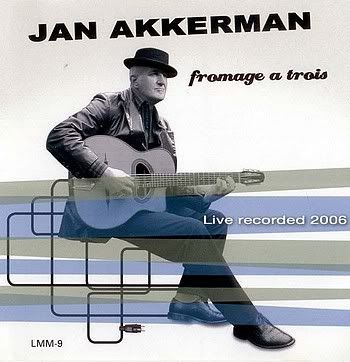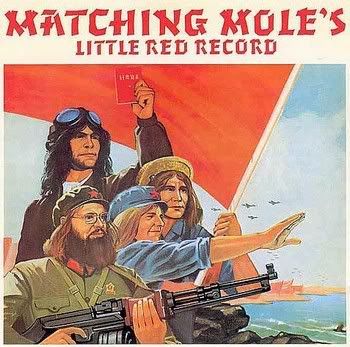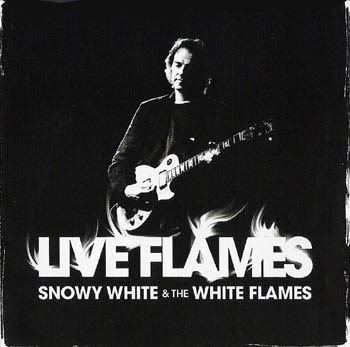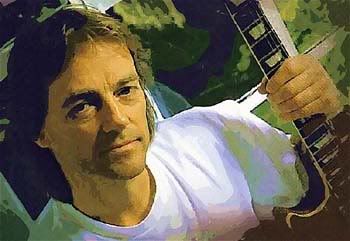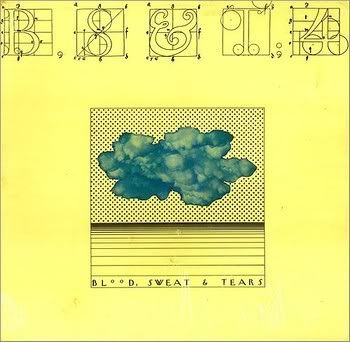
Blood, Sweat & Tears - B, S & T 4 - 1971 - ColumbiaThe great New York-based jazz rock band were very lucky to find David Clayton-Thomas, who could sing their fantastic mix of jazz rock, blues, soul, pop, big band and classical music, and make them a hugely popular jazz rock band in the late sixties and early seventies.The English born David Clayton-Thomas, based in Toronto, Canada, had written some Canadian chart hits and was a popular "jamming" musician in NYC in the sixties for his ability to sing any song with all types of bands. When he joined B, S & T , after sailing through an audition, his voice became the sound of BS&T, and the band produced some of the biggest hit singles of the 1960s. David Clayton-Thomas has a great voice, and wrote some great songs including the classic "Spinning Wheel". When he played with BS&T, he had a wonderful stage presence, and was a natural bandleader, who had complete control over BS&T's playing style. He was also a hugely popular artist with concert-goers. But like so many other bands, who keep going when "the captain leaves the ship", it will be forever said that the band could not maintain either their popularity, or great musical output when David went his separate way. B, S & T 4 has received many mixed reviews. Some say it is a typical B, S & T album with great vocals and songs from David Clayton-Thomas, while others think it is a weak album, especially on the compositional side, regardless of David Clayton-Thomas' great vocals. Nevertheless, the album was a commercial success, and most of the music is excellent. It has been stated before on this blog, that B,S&T found it very difficult to emulate the brilliance of the their first two albums. David Clayton-Thomas has featured on a few later B, S & T albums. Check out "Nuclear Blues". There is info on the Blood, Sweat & Tears Featuring David Clayton-Thomas album, "New City" @
BST/DCT/NC and you can find info on the Blood, Sweat & Tears "More Than Ever" album @
BST/MTE If you haven't been familiar with B, S & T's early music, check out their stunning 1968 "Child Is Father To The Man" album, regarded as the band's "Sergeant Pepper" and their outstanding 1969 s/t "Blood, Sweat & Tears" album.
TRACK INFO
A1 Go Down Gamblin' (4:14)
Arranged By - Fred Lipsius
Written-By, Arranged By, Guitar - David Clayton-Thomas
A2 Cowboys And Indians (3:07)
Written-By - Terry Kirkman, Dick Halligan
Arranged By - Dick Halligan
A3 John The Baptist (Holy John) (3:35)
Arranged By - Fred Lipsius
Written-By - Phyllis Major, Al Kooper
Arranged By - Al Kooper
A4 Redemption (5:11)
Congas - Michael Smith (9)
Guitar - Jim Fielder
Written-By - Clayton-Thomas, Halligan, Katz
A5 Lisa, Listen To Me (2:58)
Lyrics By - David Clayton-Thomas, Music By Dick Halligan
Arranged By - Dick Halligan
A6 A Look To My Heart (0:52)
Written-By, Arranged By - Fred Lipsius
B1 High On A Mountain (3:13)
Arranged By - Dick Halligan
Written-By - Steve Katz
B2 Valentine's Day (3:56)
Arranged By - Fred Lipsius
Bass [Acoustic Bass] - Dave Bargeron
Clarinet, Clarinet [Bass Clarinet] - Don Heckman
Written-By, Vocals - Steve Katz
B3 Take Me In Your Arms (3:27)
Arranged By - Fred Lipsius , Jim Fielder
Written-By - Dozier, Holland, Holland
B4 For My Lady (3:23)
Arranged By - Dick Halligan
Bass [Acoustic Bass] - Dave Bargeron
Clarinet, Clarinet [Bass Clarinet] - Don Heckman
Written-By - Steve Katz
B5 Mama Gets High (4:09)
Written-By - Steve Katz, Dave Bargeron
Arranged By - Dave Bargeron
B6 A Look To My Heart (Duet) (2:07)
Written-By, Arranged By - Fred Lipsius
MUSICIANSAcoustic Guitar, Guitar, Harmonica, Mandolin - Steve Katz
Guitar - Georg Wadenius [Not definite if he played on this album - info. appreciated]
Bass [Electric] - Jim Fielder
Drums, Percussion - Bobby Colomby
Lead Vocals - David Clayton-Thomas
Organ, Trombone, Piano, Flute - Dick Halligan
Keyboards - Larry Willis
Producer - Don Heckman
Saxophone [Alto], Piano, Organ, Clarinet - Fred Lipsius
Sax/Flute - Lou Marini, Jr
Trombone, Tuba, Horns - Dave Bargeron
Trumpet, Flugelhorn - Chuck Winfield , Lewis Soloff
Arranged By - Dick Halligan (tracks: A2, A4, A5, B1, B4) , Fred Lipsius (tracks: A1, A3, A6, B2, B3, B6)
REVIEWSI have always love the originality of BS&T. Their first three albums showed that they could take other singer/songwriter's music and create such a completely different version that the song would belong to BS&T forever. Blood Sweat & Tears 4 was going to be the album where they put their own songwriting to the test. All but two songs on this LP was written by the group. The exceptions: "John the Baptist" (by Al Kooper, ex-BS&T member) and "Take me in your arms" It's also interesting to note that while recording this album the group got so frustrated that they even asked Kooper to help produce it. Music-wise, this is a very good LP. Although only two songs got any real airplay, "Go Down Gambling" a Clayton-Thomas rocker, and "Lisa Listen to Me" a upbeat melodic number, just about all the songs are great. My favorite is Redemption, a hard driven song that has your classic BS&T sound. Although not their best (Blood Sweat & Tears, their 2nd album will always be their bench-mark) this by far tops BS&T 3 and anything that came after. This particular album accentuates how a band that enjoyed such tremendous success, could be so unaffected as to turn out a mature and well constructed album of charts that are similar but vastly different from their previous albums. This innovative band continued, with this recording, to be one of the great aural joys of their era. The highpoints are "Go Down Gamblin'" with David Clayton-Thomas being surprisingly good on guitar. Raunchy guitar lines over awesome brass, with Jim Fielder humming on bass. "Cowboys and Indians" - mature, thoughtful. Dave Bargeron's mellifluous trombone gliding above the arrangement. "Redemption" - strong unorthodox drumming(Max Roach meets Butch Trucks) by Bobby Colomby. Sharp Brass attach lead by the stratospheric Lew Soloff, and Dave Bargeron taking off at dead run and shifting to fourth gear on trombone. The touching "Valentine's Day" with Steve Katz plesant easy vocal style and the classically inflected piccolo trumpet solo of Lew Soloff over Chuck Winfields trumpet, "Mama Gets High" - Dixieland Rock and the intropsective piano , trumpet collaboration of Lew Soloff and Fred Lipsius. It is a shame that this band has become one of the best kept secret joys in music, when far lesser bands have been lionized. They were the first of their kind and there never was another. Some say that you cannot wed one musical idiom to another. This is proof that you can. - Liner Notes by Don Heckman ........Review: - Having relied largely on outside songwriting for its last two wildly successful albums, Blood, Sweat & Tears decided (as many groups had before) to bring some of that song publishing income into the family by writing their own material. Singer David Clayton-Thomas contributed the Top 40 hit "Go Down Gamblin'," and he and keyboard player Dick Halligan collaborated on another chart entry, "Lisa, Listen to Me." Ex-bandleader Al Kooper even contributed a track, "John the Baptist (Holy John)." But Side two was given over largely to songs by guitarist Steve Katz that were substandard, and the band's cohesion seemed to be disintegrating. Although the album scraped the Top Ten briefly and went gold, it marked the end of BS&T's period of wide commercial success on records. By the next outing, Clayton-Thomas had quit and the band's heyday was behind it. Although this was their swan song LP, nonetheless it was and remains a remarkable achivement for a bunch of guys, that for all practical purposes didn't like each other very much. With all that was going on with this group, they managed to set a new genre of music at the time and in doing so sold a lifetime of music in a very short span. © Audiogon.com. All rights reserved
Having relied largely on outside songwriting for its last two wildly successful albums, Blood, Sweat & Tears decided (as many groups had before) to bring some of that song publishing income into the family by writing their own material. Singer David Clayton-Thomas contributed the Top 40 hit "Go Down Gamblin'," and he and keyboard player Dick Halligan collaborated on another chart entry, "Lisa, Listen to Me." Ex-bandleader Al Kooper even contributed a track, "John the Baptist (Holy John)." But Side two was given over largely to songs by guitarist Steve Katz that were substandard, and the band's cohesion seemed to be disintegrating. Although the album scraped the Top Ten briefly and went gold, it marked the end of BS&T's period of wide commercial success on records. By the next outing, Clayton-Thomas had quit and the band's heyday was behind it. © William Ruhlmann, allmusic.com
When Ed Sullivan welcomed Blood, Sweat & Tears to his show a while back he asked them where they got the unusual name from. From Churchill, they replied. Well, since the Kinks did Arthur, everybody knows Churchill isn't worth very much anymore, so as a result the name has been immeasurably weakened. So maybe they ought to shorten it (names of groups are too long nowadays) to just Tears. After all it's the Tears that have always been their most vital component. There really hasn't been that much in the way of sweat except maybe from the spotlights getting too hot. And the only blood has been from the deep scratches Janis inflicted on David ClaytonThomas' back when that pair hooked up once upon a time. So it's Tears and it fits. After all they've always been best at sad ballads and this album is no exception. And Steve Katz has a lot to do with it, having written two real pretty little things, called "Valentine's Day" and "For My Lady." The first of them is sort of vaguely reminiscent of something with a similar title that Tim Buckley did around four years ago. Which isn't peculiar, since Steve did that Buckley thing "Morning Glory" on the first BS&T album three years ago. Well, his Valentine item is just as pretty as anything by Tim and "For My Lady" is prettier still. It's as pretty as a peach, it's even what some people might call shit-pretty. That's how pretty it is. Lovely in fact. And Fred Lipsius does this even lovelier instrumental thing on both sides called "A Look to My Heart" which sounds like Monk's "Ruby My Dear" and sounds even more like Coltrane's "Naima." Or anything by Bill Evans. You know: concrete timeless breathless prettiness as an excuse for beauty. Which certainly is a good formula. Like if jazz titans can indulge in it, why not jazz non-titans like BS&T? It's no disgrace to balladize exclusively, maybe they ought to give it a try. It's what they do best, isn't it? When they try to rock with David wailing and flailing it comes off like Paul McCartney doing same. Conviction is abandoned in the attempt to get down, get with it, teach your dog to swim. And conviction is something that actually seems to be on the agenda when they're doing the soft stuff and ever since Elvis did "I Want You, I Need You, I Love You," it's been a well-known fact that ballads need not be worthless. And need not be non-rock either so there's no threat to their masculinity or anything like that. Anyway, ballads may even be vehicles for the conveyance of meaning. Like on that Indian song by David called "Cowboys and Indians." It's an Indian song rather than cowboys, and it's poignant and yet there's no blood like in Soldier Blue or Little Big Man so it avoids heavy polarities in making its point. Kids'll be quoting it in English classes and maybe even social studies. Richie Havens could even have a decent size hit with it and then it would take on really relevant racial significance. So you can play the soft tou ching stuff and then for a change slip the needle over to "Lisa, Listen to Me." It's like a breath of fresh Airplane, circa "We Can Be Together." Steve really pulls off a mind-boggier of a riff on his ax and the vocal that follows doesn't even ruin it. Put the ballads and it together and you've got yourself the best – B-(e)-S-(&)-T – Blood, Sweat & Tears album since the first. And come to think of it, David's guitar playing on "Go Down Gamblin'" is better than Jagger's guitar playing on Sticky Fingers. And "For My Lady" is a lot like George Harrison's "Something," so I wonder what Joe Cocker would have to say about it. © R. MELTZER, (Posted: Aug 5, 1971), © 2009 Rolling Stone

BIO (B,S & T/DAVID CLAYTON-THOMAS)For a brief period at the end of the '60s and the start of the '70s, Blood, Sweat & Tears , which fused a rock & roll rhythm section to a horn section, held out the promise of a jazz-rock fusion that could storm the pop charts. The band was organized in New York in 1967 out of the remnants of the Blues Project by keyboard player/singer Al Kooper and guitarist Steve Katz of that group and saxophonist Fred Lipsius . The rhythm section consisted of bassist Jim Fielder and drummer Bobby Colomby and the horn section was filled out by trumpeters Randy Brecker and Jerry Weiss and trombonist Dick Halligan . Al Kooper came up with the name when he was on the phone with a promoter, while gazing at a Johnny Cash album cover. The album was called, "Blood Sweat & Tears". The inspiration for the band name did not come from Winston Churchill's quote, "I have nothing to offer but blood, toil, tears and sweat", as was widely reported at the time. Their first gig was at the Village Theater (which later became the Fillmore East) as the opening act for the James Cotton Blues band. A couple of weeks later the band opened for Moby Grape at the Cafe A Go Go. They were a huge success and three record labels were willing to sign the group. They decided to sign Columbia, a label that Kooper already had a relation-ship with. In December 1967 they began recording their first album "Child Is Father To The Man", which was released on February 21 1968. The critics loved it and compared it to the Beatles "Sgt. Pepper" and the Beach Boys "Pet Sounds". The album was considered as a mile stone in rock music and was awarded a Grammy nomination, but only hit # 47 in the charts. Al Kooper began working on the next BS&T album, searching for songs for follow-up material. On the first album, Kooper was given free hands to do what he could for BS&T. On the second album Katz and Colomby wanted to take a more active part in the development of the band and both of them wanted to get a new, better, stronger vocalist. After meeting with Kooper he decided to leave the band after their last gig at the Garrick Theatre in New York. Also Randy Brecker left the band to join the Thad Jones-Mel Lewis Band. He was replaced by Chuck Winfield. Jerry Weiss left as well, his place being taken by Lew Soloff. Dick Halligan took over the organ and Jerry Hyman was added on trombone. Now they started searching for a new singer. Laura Nyro, who happened to be dating Jim Fielder at the time, was invited to a rehearsal, but she decided not to join the band. Steven Stills was also approached, but he was busy working with Al Kooper and Mike Bloomfield on the "Super Sessions" album. Bobby Colomby then told the others of a virtually unknown singer named David Clayton-Thomas, and convinced them that his Blues-tinged style seemed perfect for the band. Clayton-Thomas had some hits in Canada with "the Bossmen" and sang briefly with a band called "Flying Machine". Born in Surrey, England, on Sept. 13th, 1941 as David Henry Thomsett of British-Canadian parents, the family moved to Toronto, Canada when he was age six. David had a troubled adolescence and was jailed a half-dozen times for vagrancy, parole violations and petty theft. While other teenagers in suburban Toronto were attending high school proms, David was a street kid, a loner, sleeping in parked cars, stealing food and clothing, learning how to survive and fight behind bars. When he was at Millbrook Reformatory he learned to play the guitar. An old guitar had been left behind by an outgoing inmate, and David claimed it. He began to practice alone, late into the night, and for the first time in his life he had a dream, a plan for the future. After his release, David made music his life, and steadily honed his skills in one band after another until Blood, Sweat and Tears approached him in 1969. The band also hired James William Guercio to produce their next album. If their first effort was a loose jazz blending melted together with rock, this album had a clearer delineation between jazz and rock. Straight-ahead rock songs and a jazzy part in the middle of each song. This was the formula that really did catch the fancy of the public. The album was released on December 11 1968 and launched three gold singles, "You've Made Me So Very Happy," "And When I Die" and "Spinning Wheel". The L.P. garnered five Grammy awards, including Album of the Year and Best Performance by a Male Vocalist. Suddenly B,S&T were as big as any band could be. Offers poured in for major concerts, TV appearances and jazz and rock festivals from coast to coast. They even played at the original Woodstock Festival. The month following Woodstock they began working on their next album. Before the album was released, they had to make a goodwill tour to East Europe, because Clayton-Thomas who was a Canadian citizen didn't have a green card. The members didn't like the idea of making a goodwill tour for the Nixon-administration but they had no choice if they wanted to keep Clayton-Thomas in the band. The tour was a major disaster. On the fist night, in Bucharest, the young Romanian audience jumped to its feet and shouted "USA". The Police responded by loosing attack German shepherds on the audience. The communist government gave orders to B,S&T, " more jazz ...less rhythm". After the return from the tour, their third album, "Blood, Sweat & Tears 3", struck gold upon it's release. The album contained a lot of high points, such as Goffin-King's "Hi-De-Ho", Laura Nyro's "He's A Runner", Traffic's "40,000 Headmen" and Clayton-Thomas' "Lucretia MacEvil" along with one of Steve Katz finest songs, "The Battle". On the album was also a version of Jagger-Richards' "Sympathy for the Devil", with an arrangement by Dick Halligan. "Hi-De-Ho" was released as a single and reached #14 in the charts. Jazz magazines praise their precision, their arrangements, and their musicianship. Contrary, rock critics call the group "slick and inflexible". Clayton-Thomas replied to the criticism."This band does more free blowing on stage than practically any rock band, but we do it within a very literate and educated framework. A lot of people say, it sounds so precise. Well that's the way these guys play. If you go to Juiliard for five or six years, you learn to play precisely." In September, "Lucretia MacEvil" was released as the next single and peaked at #29 in the charts. November saw the group play its first concert with a full symphony in New Orleans. They also recorded music for a Barbra Steisand, George Segal movie, "The Owl and the Pussycat". In January 1971, the group begin recording its next release in San Francisco. They recruited jazz writer/saxman/composer Don Heckman to co-produce. The sessions seem to drag on, with takes mounting up to the dozens. In a brief break from the recording, Blood, Sweat & Tears became one of the first rock bands to play Las Vegas, for which they received a lot of criticism. The band was charged with being hollow and pretentious, swapping its original rock audience for older, cabaret-oriented listeners. They were called a"lounge act" and that they had sold their soul for the money. Back in the studio again, they ask Al Kooper to come and help out with the album. Kooper, Colomby and Roy Halee co-produced the rest of the album. "B,S&T 4" was released at the end of June and it's the first album with mostly original tunes. It turns gold in a month. This time even the rock critics are impressed. Two singles are released from the album, "Go Down Gamblin'" and "Lisa, Listen To Me", neither of which do well on the pop charts. About this time, the band seemed to split into three separate fractions: the rockers, including most of the rhythm section; the jazzers, Colomby and most of the horn section; and the Vegas star, Clayton-Thomas. Each believes that the band has gone too far in the other direction. In January 1972, the split is total. David Clayton-Thomas leaves the band for a solo career. The decision was mutual, their musical ambitions were too different. Fred Lipsius left the band. The next month David Clayton-Thomas is replaced by the blind singer Bobby Doyle, once leader of the Bobby Doyle Trio. Joe Henderson replaces Fred Lipsius and guitarist George Wadenius, a member of the Swedish group "Made in Sweden", joins the band. The new lineup fails to gel and they start to look for another lead singer. Jerry Fisher is at this time recording singles in New York with "New Design", a subsidiary of Columbia Records (the BS&T label). His newly tracked recording session prompted an invitation to have a jam session with the group. After that, he's invited to join the band. Prior to joining BS&T, Jerry Fisher performed the nightclub circuits in Las Vegas, Tahoe, parts of his native Oklahoma and Texas. He had a sizeable following and was considered by one Texas music critic as "probably the greatest white blues singer in the business". All these changes mean time rehearsing and reorganizing instead of recording and Columbia Records releases a "Greatest hits" package. Eleven selections, seven singles chart entries, plus two album tracks from the celebrated debut album when Al Kooper lead the group, and two more from the Grammy-winning multi-platinum second album.The album contained the singles edits of the songs. The personal changes continued. Joe Henderson is replaced by Lou Marini Jr. Dick Halligan calls it a day and Larry Willis takes over as keyboard player. In the summer of '72, Blood, Sweat & Tears went in the studio again to record a new album. This time they choose mostly covers. At the end of August, the first new material to be released in 13 months, the single "So Long Dixie" is released, but stalls out at #44. The album is released a month later. A discouraged Steve Katz leaves the band along with Chuck Winfield, who is replaced by Tom Malone. There is no replacement for Steve Katz. As touring continued, Blood, Sweat and Tears begin gathering material for yet another album and in the spring of 1973 they are once again in the studio to record. The result "No Sweat" was released in June the same year and contained both originals and cover songs. The album this time is more rocking with "Roller Coaster" released as a single. The LP scores at #42 and another single, "Save Our Ship" is released from the album. The touring continues and so are the personal changes within the band. Longtimer Jim Fielder leaves and is replaced by Ron McClure, Lou Marini JR is replaced by Bill Tillman. Tom Malone leaves and Tony Klatka takes over. Lew Soloff also leaves the band. Jerry LaCroix, formerly a member of the Edgar Winter group, joins the band on sax and flute. He also sings, but Jerry Fisher is still the lead singer. In March and April 1974 the band spend most of the time in the studio for their forthcoming album and in July, "Mirror Image" is released. A song called,"Tell Me That I'm Wrong" is released as a single but only reaches #83. The album flops at #149. Jerry LaCroix didn't feel comfortable within the band, and he couldn't' handle Bobby Colomby. Basically he didn't care for Blood, Sweat and Tears style and he did not like to share lead vocal duties. He was more interested in his solo album "The Second Coming", that he recently had recorded. He once said that one of the reasons for him to join was that they ware going on a world tour and he hadn't seen the world. While they were in Australia he decided to quit. When they came back, he left the group after a gig in Central Park. Luther Kent, a blues singer from New Orleans was recruited as a new leadsinger, together with Jerry Fisher. Luther Kent had been singing with The Greek Fountains, a busy, popular band in demand regionally, then criss-crossed America with his own, 9-piece r&b band, "Blues, Inc". His voice could be described as powerful, rough and whiskey-drenched. Blood, Sweat and Tears never did any recordings with Luther Kent, who eventually quit to form "Trick Bag" with guitarist Charlie Brent. As 1975 began, David Clayton-Thomas returned to Blood, Sweat and Tears. Joe Giorgianni was added on trumpet, flugelhorn and in sessions during February, they recorded new songs for an album. 50 percent cover tunes (Janis Ian, Randy Newman, the Beatles, Blues Image) and 50 percent originals, including a song from one of Clayton-Thomas solo albums ("Yesterday's Music"). The L.P. called "New City" is released in April, and on the cover it says "Blood, Sweat & Tears featuring David Clayton-Thomas", to let people know that now it's the same band that made all those hits a few years ago. It's the first BS&T album in many years to get favourable reviews. Live bookings began to increase in quality and quantity, and the band experienced renewed popularity. Their revival of the Beatles "Got To Get You Into My Life" peaked at US #62, and the album hit #47. During this period, a live album was recorded and released in Europe and Japan as "In Concert". It's the same album that later was released as "Live and Improvised" in the U.S.A. In August 1976, an album called "More Than Ever" was released, but it was a disappointing seller. This was the weakest album they ever have put out, despite guest vocals by Patti Austin. It stalls at #165 and Columbia Records dropped the band. At this time, Bobby Colomby, B,S&T's sole remaining original member calls it a day. In 1977 the band is signed to ABC records and in November the same year, they recorded "Brand New Day". The album garnered positive reviews, but was not a major seller. The group continued to tour and personnel continued to fluctuate. In January 1978, they toured Europe. The band members at that time were, Clayton-Thomas on vocals, Dave Bargeron tuba, Anthony Klatka and Chris Albert trumpet, Gregory Herbert saxophone, Randy Bernsen guitar, Larry Willis keyboards, Neil Stubenhaus bass and Bobby Economou on drums. After a concert in Amsterdam, Gregory Herbert took an overdose of cocaine and died. The band returned home and separated. In late 1979, David Clayton-Thomas reformed a new Canadian version of Blood, Sweat & Tears with Bobby Economou. On guitar he recruited Robert Piltch, one of Canada's finest young guitarists and his brother David on bass. The other members were: Bruce Cassidy from Bruce Cassidy Band on trumpet, and arranger. Earl Seymour - Saxophone, Flute, Vernon Dorge - Alto, soprano sax, flute, Richard Martinez - Organ, piano, clavinet. Signed to MCA Records in 1980, this incarnation of Blood, Sweat & Tears first album was called "Nuclear Blues" and featured cover versions of Jimi Hendrix's "Manic Depression" and Henry Glover's blues classic, "Drown In My Own Tears". But the face of music had drifted away from the style that made Blood, Sweat and Tears popular and the band disbanded again later the same year. The Group faded from view for pretty much the next five years, with Colomby and Clayton-Thomas occasionally getting together for a few live shows here and there. In 1985, David teamed up with hard-driving young manager, Larry Dorr, formerly a tour manager with he band. Larry convinced David that there was still life in the once proud name Blood, Sweat & Tears, and that with the right musicians, good management, and strong leadership, it could once again be an attraction on concert stages around the world. They recruited musical director/trumpeter Steve Guttman, graduate of Oberlin Conservatory of Music, and Blood, Sweat & Tears began performing with prestigious American symphonies like the Detroit, the Houston, the Oklahoma City Symphony Orchestras. Larry Dorr was right. A revitalized BS&T under his direction and David's leadership came storming back to the concert stages of the world, playing international jazz festivals, symphonies, concert halls and casino show rooms. In the late 80's the personnel of the band stabilized and they became a regular group again. Due to legal hassles over use of the name "Blood, Sweat and Tears"' there haven't been any new albums released. In 1994, David Clayton-Thomas and Blood Sweat & Tears horn section: Jerry Sokolow - trumpet, Steve Guttman - trumpet, Tim Ries - Sax and Charlie Gordon - Trombone, made a record with the Hungarian jazz drummer Leslie Mandoki. The album was called "People". In 1996 David Clayton-Thomas was induced into the Canadian Music hall of Fame. and later recorded an album that was called "The Uptown Album". It was recorded live at Ornette Coleman's Harlem studio and was produced by David himself. It was released in Canada in November 1997 and in the US and the rest of the world in January 1998. In 1997 another album called "People In Room no. 8" was released. Later in 1998, David recorded a solo album called "Bloodlines" that featured some of the musicians that had been in Blood Sweat and Tears over the years. Blood, Sweat and Tears continued to tour and even though David Clayton-Thomas is regarded as "the voice of Blood, Sweat & Tears", it is the skill and the musicianship of all those very talented musicians that have passed through the band that made this group so special. In 2007, they were sharing the stage with Chuck Negron, formerly of Three Dog Night, in a series of shows across the US. © www.classicbands.com/bst.html
